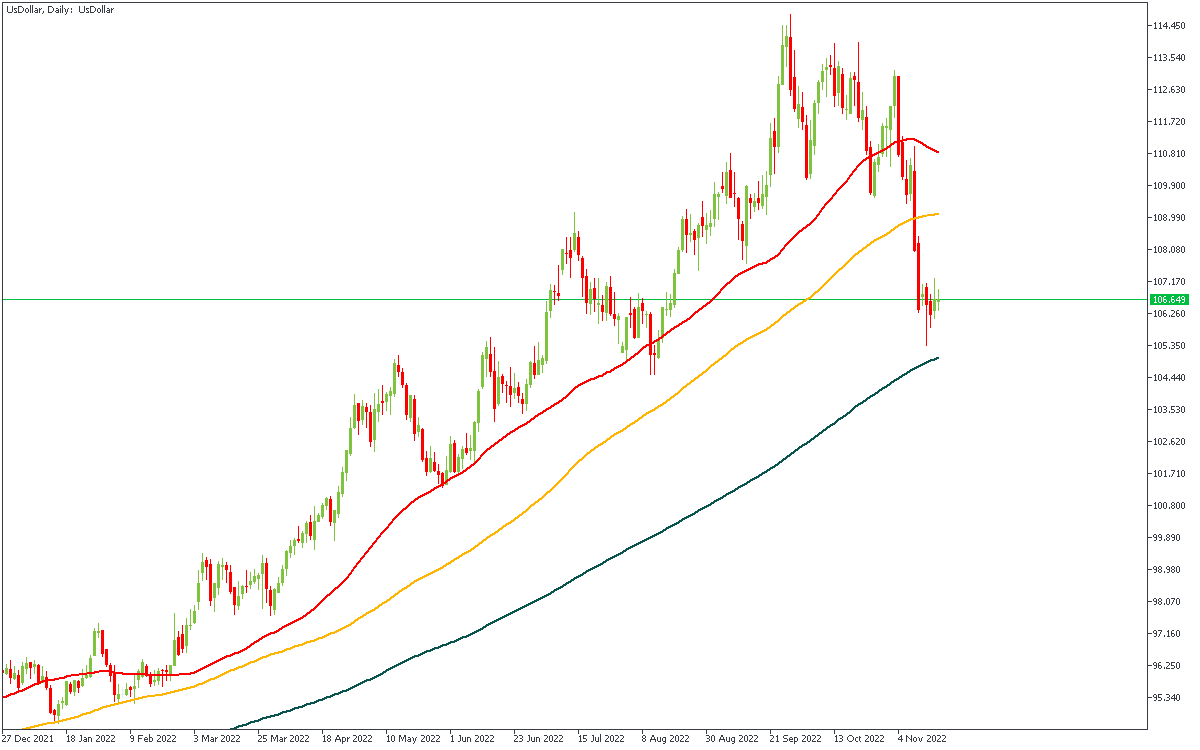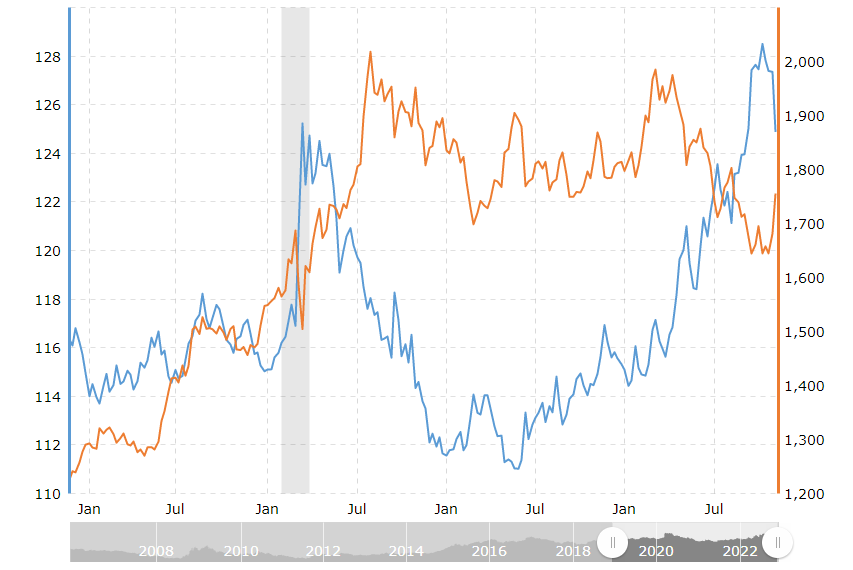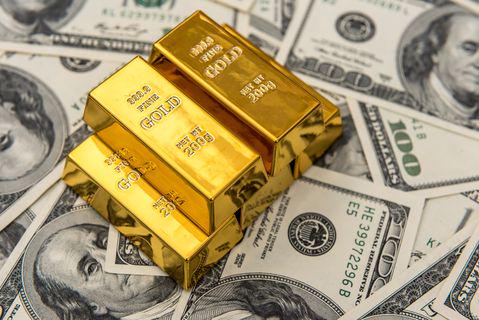
Many investors treated gold as a protection against inflation. However, last week, gold lost its major support and dropped despite rising inflation. Why did it act like this?

Don’t waste your time – keep track of how NFP affects the US dollar!
Data Collection Notice
We maintain a record of your data to run this website. By clicking the button, you agree to our Privacy Policy.

Beginner Forex Book
Your ultimate guide through the world of trading.
Check Your Inbox!
In our email, you will find the Forex 101 book. Just tap the button to get it!
Risk warning: ᏟᖴᎠs are complex instruments and come with a high risk of losing money rapidly due to leverage.
71.43% of retail investor accounts lose money when trading ᏟᖴᎠs with this provider.
You should consider whether you understand how ᏟᖴᎠs work and whether you can afford to take the high risk of losing your money.
Information is not investment advice
Suddenly, the US Dollar Index fell 6.70% over the last two weeks, marking the biggest decrease in the currency since 2020. This movement greatly impacted stocks, other currencies, and gold. In this article, FBS experts focus on the XAUUSD pair as a main antagonist of the dollar. Economic analysis, valuable tips, and price forecasts are in this article.
The uptrend in the USD that lasted almost two years. It may now seem that the US currency is finally ready to reverse to the downside. The decrease started on November 4, when the US Office for National Statistics released the Non-farm employment change (NFP) data. The two previous releases pushed the USD up, that’s why it was surprising that high NFP pulled the USD down.

The US dollar strengthened after September’s and October’s NFP because the strong labor market signaled to the Fed that the American economy was still hotter than needed. Thus, it was evident that the Fed would increase the interest rate to decrease the speed of rising prices. In November, however, the sentiment started to change because NFP was still lower than in previous months, meaning that the labor market finally started to cool down.
The USD decrease sped up when the US monthly CPI data came out on November 10. A 0.4% rise vs. 0.6% forecast was taken as “the end of the recession,” sending risky assets to the moon and the USD below the 100-daily moving average. Finally, the US PPI, another measure of consumer inflation, turned out to be lower than expected (0.2% vs. 0.4% forecast).
All this created massive pressure on the US dollar index, pushing it to a three-month low and boosting EURUSD, stocks, and gold. Even so, why did gold skyrocket?
When Federal Reserve hikes rates, it makes money more expensive. To put it simply, higher interest rates increase deposit yields and loan interest. Thus, people and companies slow down spending and try to save more money for the future. The economy slows, and currency becomes more expensive, rising against other currencies. All that creates price pressure for gold, pushing it lower when the Fed fights inflation and insists on hawkish measures.
Here’s how it works:
The correlation between these two assets is better to see than to read about. Also, consider checking the FBS website for more analysis on gold and USD movements.

As for now, we have come to the most exciting part of the USD-gold price correlation, which is the change in the global trend.
Both the USD and XAUUSD approached the most important indicator of the trend – the 200-daily moving average. This level acts as a support for the dollar and as a resistance for gold. In both cases, the breakout of this level will signal a change in the long-term trend.
If the USD breaks the level of 105.00, gold will be extremely bullish. However, it’s important to notice that 200-period MA is a solid barrier. Assets usually take several attempts to break and form a price swing in the direction of the breakout. Therefore, we consider gold will correct from the area of $1785-1800 and reach the support of $1730, the last price high. After that, we need to look closely at actual economic data. More bearish news for the USD would add momentum to gold movements, and the metal may rise to $1880.

In summary, gold has more chances to grow than in the previous eight months. And with FBS, you can trade gold wherever you want, buying and selling the asset in seconds.

Many investors treated gold as a protection against inflation. However, last week, gold lost its major support and dropped despite rising inflation. Why did it act like this?

US dollar gains ahead of the US CPI data on July 13th, pressing gold to new lows!

On May 4, the US Federal Reserve revealed the federal funds rate for the next two months. Even though a 50 basis points hike was widely expected, the future is not so clear. Let’s figure it out bit by bit!

eurusd-is-falling-what-to-expect-from-the-future-price-movement

Greetings, fellow forex traders! Exciting news for those with an eye on the Australian market - the upcoming interest rate decision could be good news for Aussies looking to refinance or take out new loans. The Mortgage and Finance Association Australia CEO, Anja Pannek, has...

Hold onto your hats, folks! The Japanese yen took a nosedive after the Bank of Japan (BOJ) left its ultra-loose policy settings unchanged, including its closely watched yield curve control (YCC) policy. But wait, there's more! The BOJ also removed its forward guidance, which had previously pledged to keep interest rates at current or lower levels. So, what's the scoop? Market expectations had been subdued going into the meeting, but some were still hoping for tweaks to the forward guidance to prepare for an eventual exit from the bank's massive stimulus
Your request is accepted.
We will call you at the time interval that you chose
Next callback request for this phone number will be available in 00:30:00
If you have an urgent issue please contact us via
Live chat
Internal error. Please try again later